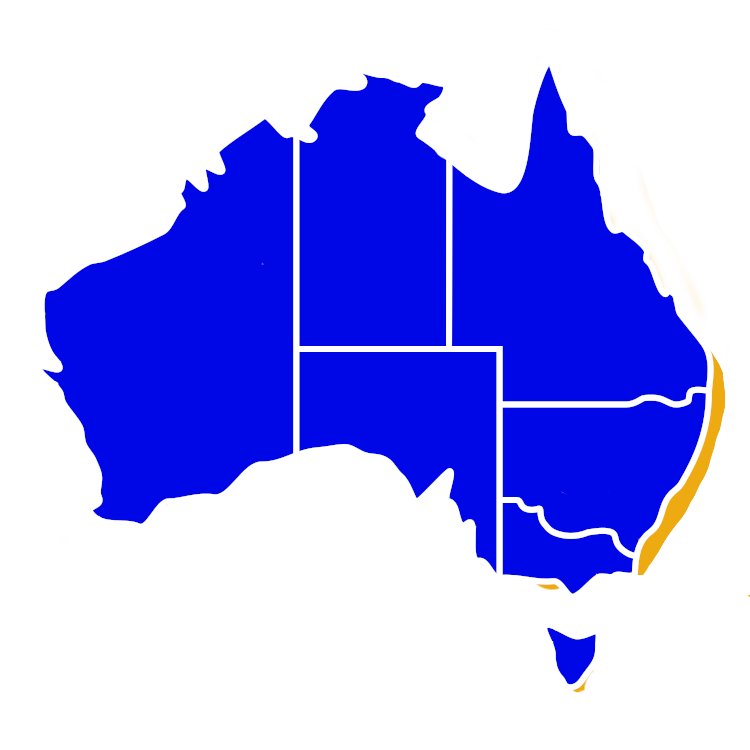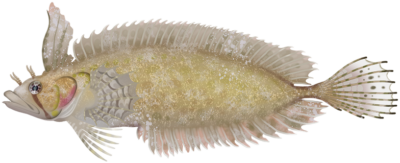Quick Facts
Distribution

Interesting Info
- The Banded Weedfish is endemic to Australia and has a widespread distribution along the eastern and southern coasts. It can be found in various locations, including southern Queensland, New South Wales, Victoria, and Tasmania.
- Banded Weedfish are known for their unique appearance. Their body is laterally compressed and features prominent, alternating dark green to black and white bands that run horizontally across the fish’s entire body. These markings provide excellent camouflage among the seaweed and rocky habitats where they reside. Colours can change based on habitat.
- These fish have a secretive lifestyle, spending most of their time hiding among seaweed and algae, which provides them protection from predators such as larger fish and birds.
- Banded Weedfish are opportunistic feeders, primarily consuming small invertebrates such as crustaceans, amphipods, isopods, and small molluscs. They use their elongated bodies to navigate through the dense seaweed and rocky crevices in search of prey.
- They are known to exhibit territorial behaviour, especially during the breeding season. Males establish and defend their territories, which they mark with scent secretions and actively patrol to deter intruders.
- The breeding season of the Banded Weedfish typically occurs during the warmer months of the year, usually from spring to early summer. During this period, the males develop vibrant coloration on their dorsal fins and engage in courtship behaviours to attract females.
- Once a male successfully attracts a female, they engage in a unique reproductive behaviour called “egg swallowing.” The female deposits her eggs on the substrate, and the male follows closely, fertilising the eggs with milt while simultaneously sucking them into his mouth for protection.
- The male Banded Weedfish holds the fertilised eggs in his mouth until they hatch, which usually takes around 7 to 9 weeks. During this incubation period, the male doesn’t eat and relies on energy stores to sustain himself. After hatching, the young Banded Weedfish larvae emerge from the male’s mouth as fully-formed miniature versions of the adults.
- They have a relatively short lifespan between 2 – 3 years.
Species Interaction
Aquarium, Snorkeling & Diving
Banded Weedfish while not commonly kept in aquariums due to its specialised habitat requirements, are sometimes kept by experienced marine aquarists with established tanks and habitats. Observing them in the wild can be a rewarding experience for snorkelers and divers. Their excellent camouflage and slow-moving behaviour make them challenging to spot initially, but once located, their vibrant banding pattern is quite distinctive.
Scientific Classification
Kingdom: Animalia
Phylum: Chordata
Class: Actinopterygii
Order: Perciformes
Family: Clinidae
Genus: Heteroclinus
Species: Heteroclinus Whiteleggii
Conservation Status
In Australia, the Banded Weedfish is not classified as a threatened or endangered species. Its conservation status is listed as “Least Concern” by the International Union for Conservation of Nature (IUCN). However, it is essential to monitor their populations and the health of their habitats to ensure their long-term survival.
Banded Weedfish
As Aquarium Fish
Care Level: Moderate to difficult
Temperament: Peaceful
Diet: Carnivore
Reef Compatible: Yes
Minimum Tank Size: 60 gallons
Recreational Viewing
- Snorkeling & Scuba
Finding: Intermediate
Temperament: Peaceful
Location: Inner Reef, Lagoon, Seagrass Beds
Danger: None





